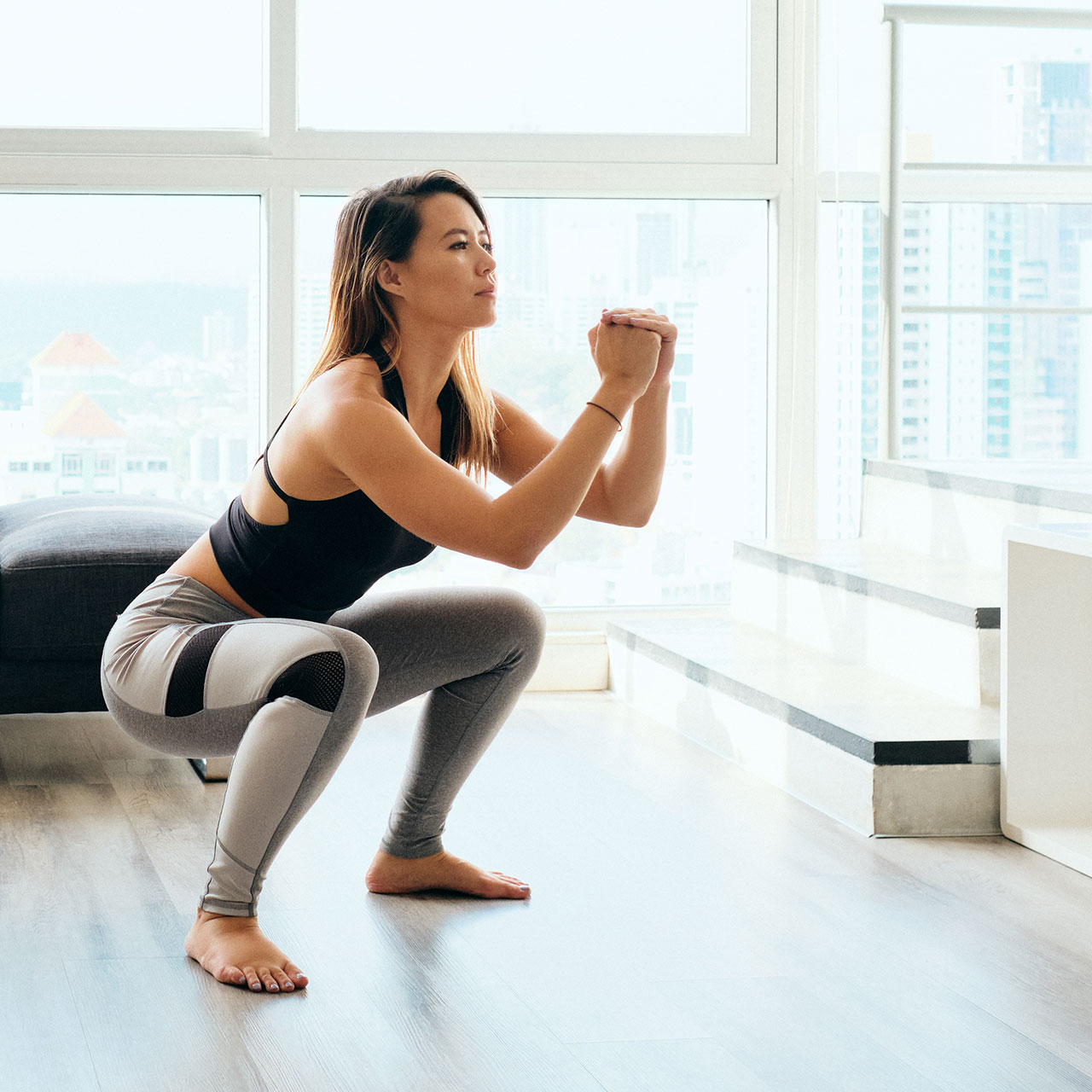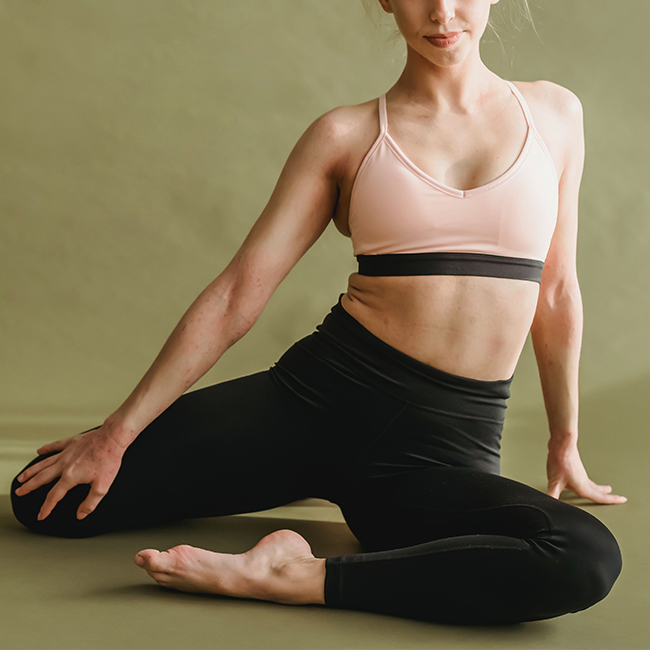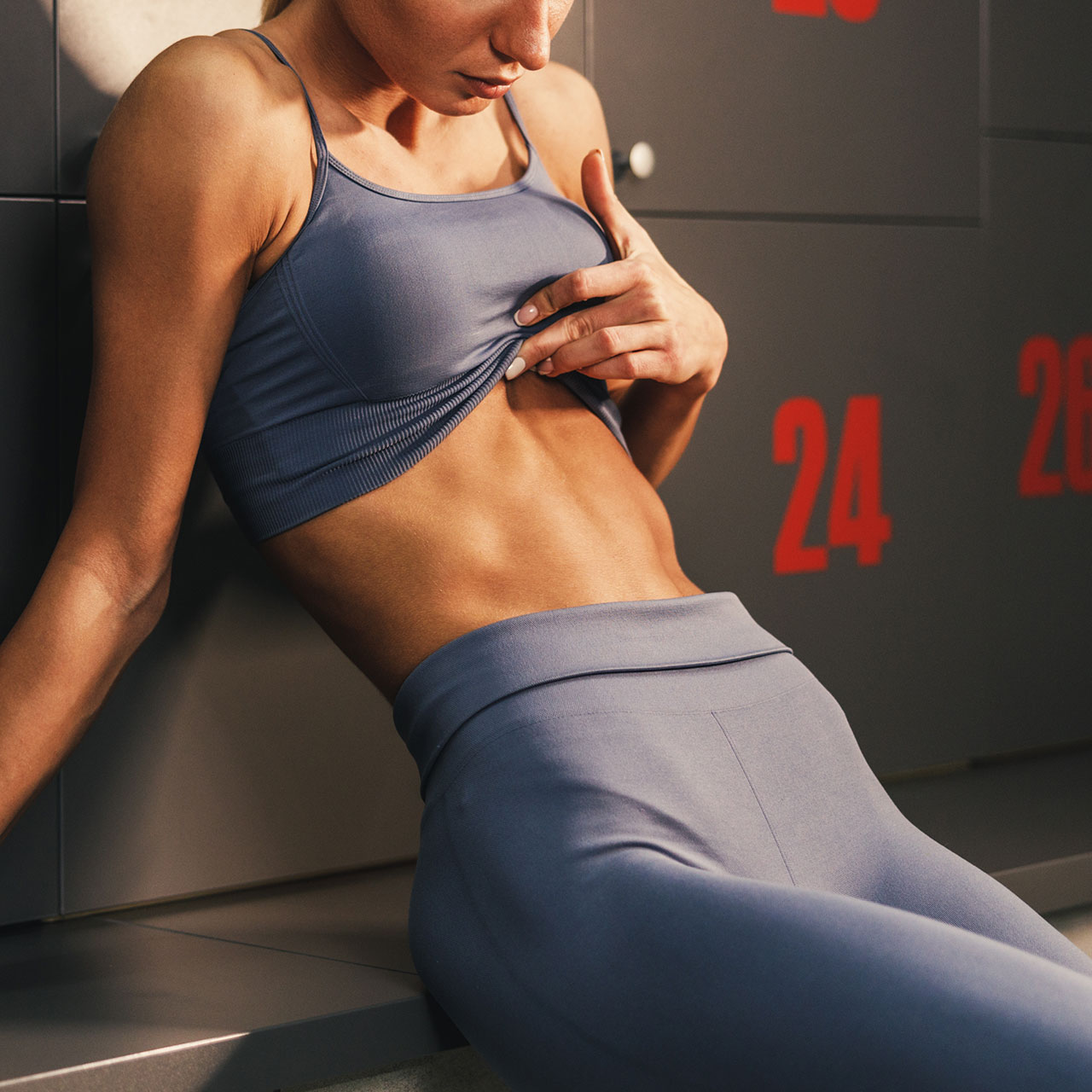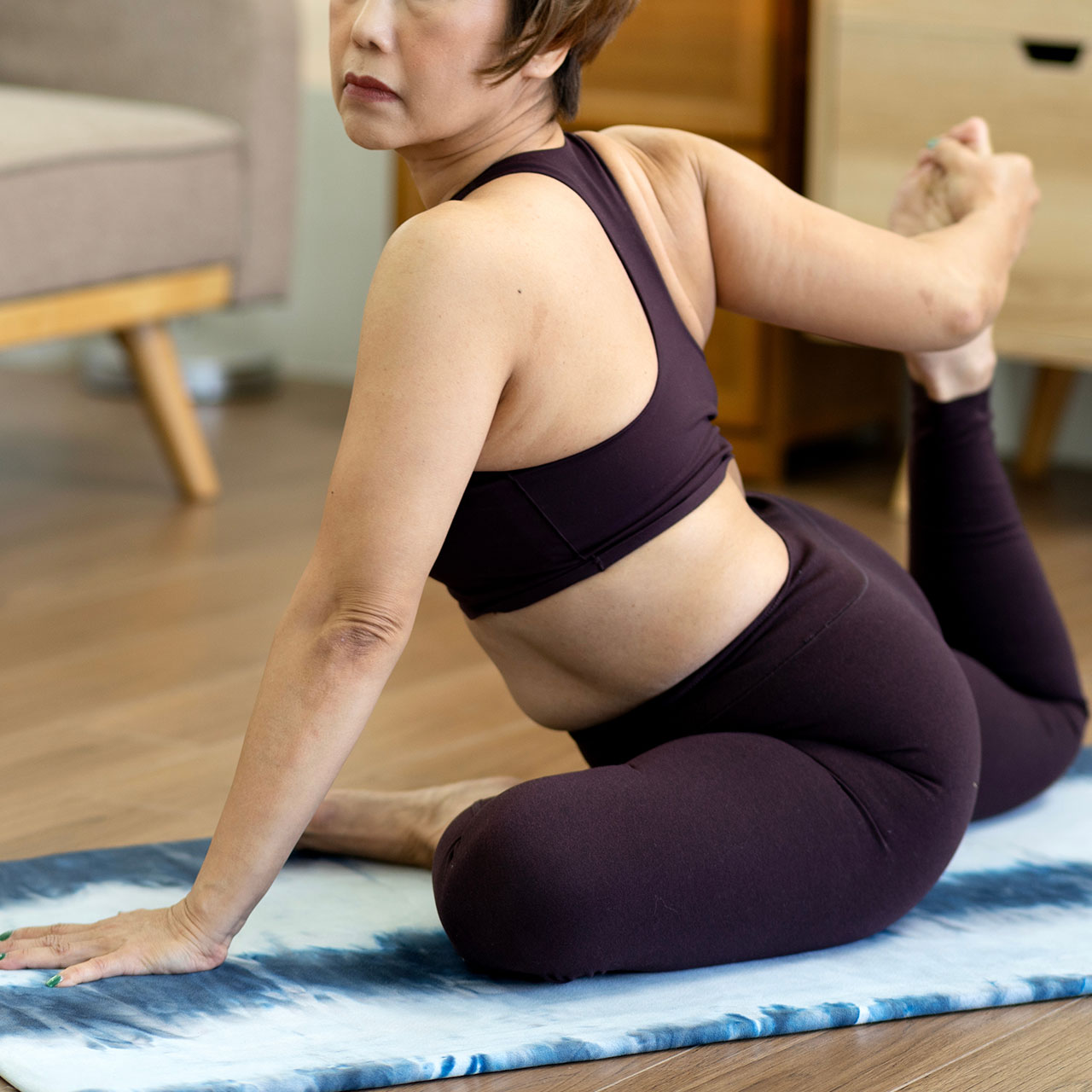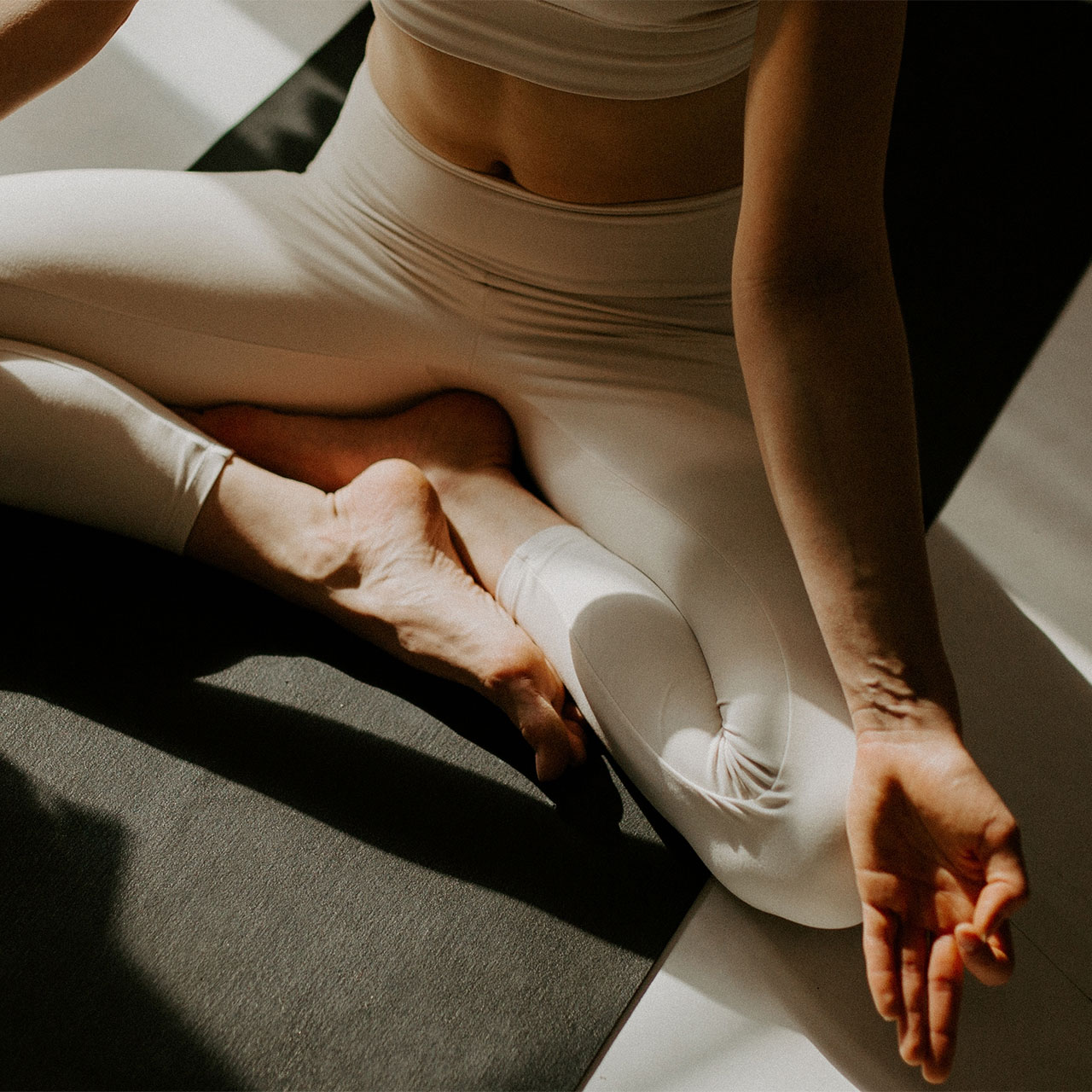This is an archived article and the information in the story may be outdated. Please check the time stamp on the story to see when it was updated last.
Bloating is one of the most frustrating symptoms of indigestion. From the feeling of uncomfortable fullness to not fitting in your clothes, it can crush your confidence and your energy. Luckily, there are lots of ways to reduce bloating. However, on those days when you’re in a hurry you may need a quick fix. This is where yoga and stretching comes in—some yoga poses can alleviate the feeling and look of bloating, so on days when you’re not feeling your best, giving yoga a try can do wonders. We asked Rachel Hall, Fitness Director at Body FX, the best poses you can do on those days when you’re a little more bloated than normal.

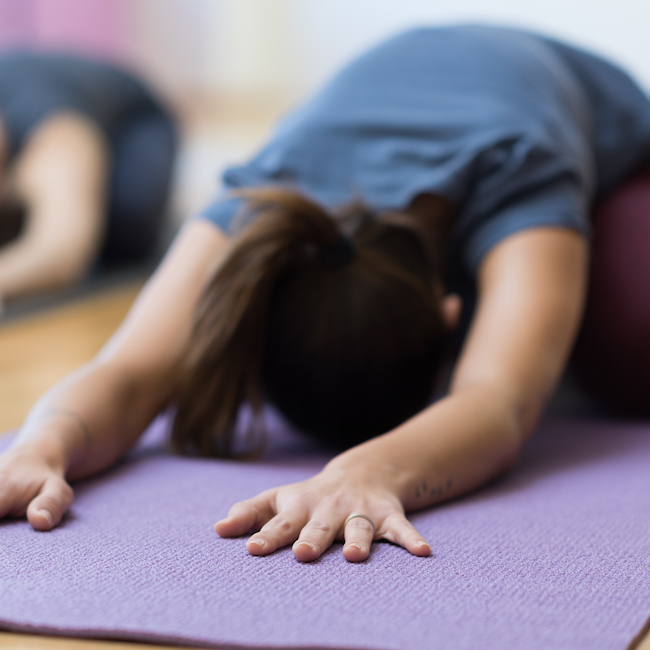
Wind Removing Pose (Pavanamuktasana)
Start out on your back with your legs extended. Draw your right knee towards your chest and interlace fingers to get a firm grip over the shin. Pull the knee towards the right shoulder, just outside of the ribcage. Keeping the left leg straight, flex the foot and draw the toes towards the shin. While remembering to lengthen back of the neck, draw the elbows in close to the body and firmly hug the right leg. Hold this one for at least 30 seconds and extend both legs long before switching to the other side. Once you’ve done both sides, repeat with both legs hugged in and both arms crossed over shins at once.
While improving flexibility and mobility of the hips, this pose also increases blood circulation and stretching lower back. It also aids in digestion and massages the ascending, descending, and transverse colon, which will relieve bloating discomfort.
Deep Squat (Malasana)
Start standing up, with feet shoulder distance apart and turned out slightly to about 45 degrees. Make sure the spine is tall, that your shoulders are back and down, and that your core is engaged. Bend your knees and lower your hips towards the ground until you’re in a deep squat. Once you’re there, press your knees out and bring your elbows to the insides of your thighs and palms together in a prayer position in front of your chest. Be sure to lengthen your spine and press your elbows out into your thighs while squeezing your thighs into the elbows. For a more active stretch, engage your pelvic floor and lift your hips slightly to hover. If you have tight hips or groin you can place a block or pillow under the hips for support. If you have any knee, hip, or lower back injuries, try child’s pose instead.
This pose improves flexibility of the hips, groin, and ankles, while increasing blood circulation to the pelvis. It also stretches the abdominal organs and pelvic floor, which will aid in digestion and bloating as well.
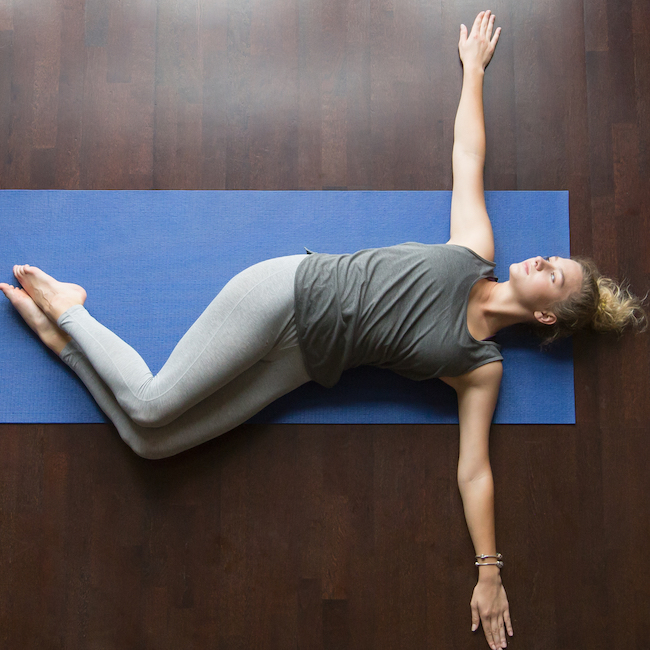
Supine Twist (Supta Matsyendrasana)
Lie flat on your back with both legs bent. Feet can either be flat on the floor or legs can float up to a tabletop position. Extend both arms out to the side, in line with shoulders. Exhale as you bring both legs to the left with control, while twisting the torso to the right. Keep both shoulders on the mat throughout this pose, and let the weight of the legs relax into the floor, hips stacked. You can intensify the stretch by turning your head to gaze over the right shoulder. Hold this for a minimum of 30 seconds, and maintain control as you switch the legs to the other side. Be sure to twist your torso to the right first in any yoga twist to first compress the ascending colon. Then when you twist your torso left, it will compress the descending colon.
This pose will stretch the chest, obliques, glutes, and lower back. It also improves spinal mobility, and aids digestion by massaging internal organs and increasing blood flow to your gut.


